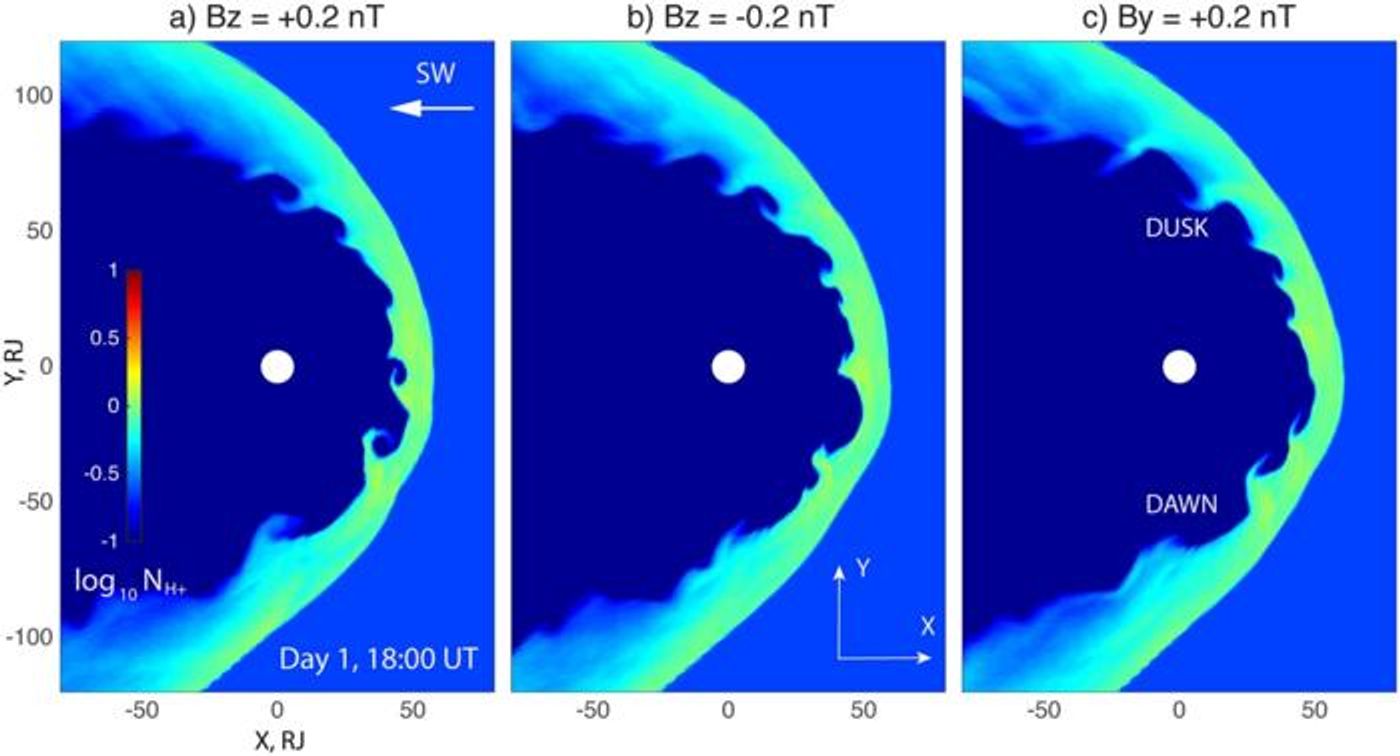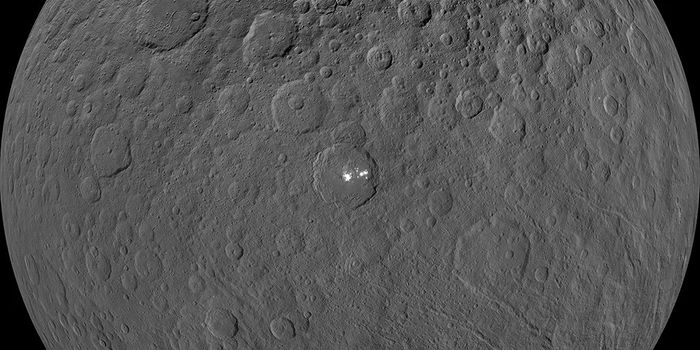Jupiter's Magnetosphere Produces Swirling Waves from Solar Wind
A recent study published in Geophysical Research Letters discusses a collaborative effort between the Southwest Research Institute (SwRI) and the University of Texas at San Antonio (UTSA). This study examines how NASA’s Juno Spacecraft has observed massive swirling waves called Kelvin-Helmholtz instabilities at Jupiter’s magnetic field and the solar wind boundary, also known as the magnetopause. This study holds the potential to help scientists better understand the interactions between the solar wind and a planet’s magnetosphere since these waves act as energy-transfer vehicles from the Sun to planetary space environments.
Image from a model produced by University Corporation for Atmospheric Research depicting Kelvin-Helmholtz instabilities, giant swirling waves, at the Jupiter magnetosphere and the solar wind boundary, also known as the magnetopause. These waves were the focus of this study in hopes of better understanding how the Sun’s energy interacts with a planetary environment. (Credit: UCAR/Zhang, et.al.)
“Kelvin-Helmholtz instabilities are a fundamental physical process that occurs when solar and stellar winds interact with planetary magnetic fields across our solar system and throughout the universe,” said Jake Montgomery, who is a PhD student in the joint physics program between SwRI and UTSA, and lead author of the study. “Juno observed these waves during many of its orbits, providing conclusive evidence that Kelvin-Helmholtz instabilities play an active role in the interaction between the solar wind and Jupiter.”
For the study, the researchers used the Juno spacecraft’s Jovian Auroral Distributions Experiment (JADE) instrument to examine the polar magnetosphere of Jupiter and the Juno Magnetic Field (MAG) instrument to collect magnetic field measurements within Jupiter’s magnetosphere. During the study, Juno passed through Jupiter’s magnetopause 62 times and identified 25 possible occurrences of Kelvin-Helmholtz instabilities, which the team determined was largely due to vast changes in velocities. The remaining 37 magnetopause crossings produced no such occurrences.
“Juno’s extensive time near Jupiter’s magnetopause has enabled detailed observations of phenomena such as Kelvin-Helmholtz instabilities in this region,” said Dr. Robert Ebert, a SwRI staff scientist who serves as an adjoint professor at UTSA and is a co-author on the study. “This solar wind interaction is important as it can transport plasma and energy across the magnetopause, into Jupiter’s magnetosphere, driving activity within that system.”
Along with Jupiter being the largest planet in the solar system, its magnetosphere is also the largest, as well. It extends as far as 4.4 million miles (7 million kilometers) towards the Sun and almost to the orbit of Saturn in the opposite direction, which is approximately 400 million miles (643 million kilometers). As a result, it emits alarming levels of radiation that spacecraft must be heavily shielded to keep from literally frying their electronics.
Jupiter’s large planetary size and even larger magnetosphere makes it an excellent analog for studying exoplanets, as hundreds of exoplanets have been confirmed to be Jupiter’s size or even larger. As the number of confirmed exoplanets in our universe continues to grow, studying Jupiter and its surrounding environment will continue to offer insights into the formation and evolution of exoplanets, as well.
What new discoveries will scientists make about Jupiter and its magnetosphere in the coming years and decades, and how will this better inform us about exoplanets? Only time will tell, and this is why we science!
As always, keep doing science & keep looking up!
Sources: Geophysical Research Letters, NASA, ScienceDirect, NASA (1), EurekAlert!, Wikipedia, Wikipedia (1), Wikipedia (2), European Space Agency, Caltech









